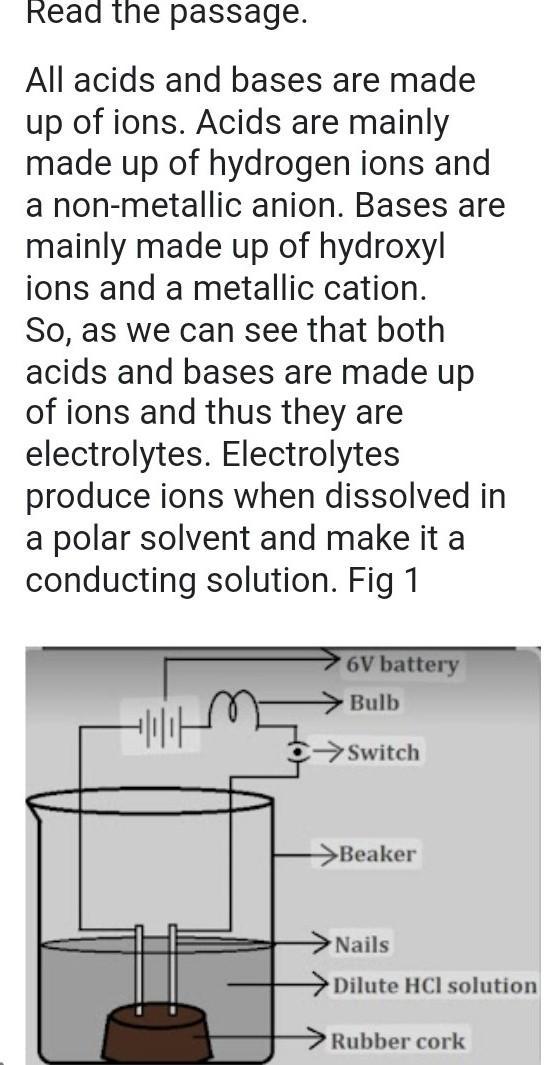Ram was performing above activity (fig 1), when there is HCL in the beaker the solution was conducting the electricity and bulb was also glowing but he didn’t find the bulb glowing when instead of HCL he used alcohol and glucose? becausea) alcohol and glucose are base so couldn’t conduct electricity.b) alcohol and glucose does not have free electrons to flow across it.c) alcohol and glucose are ionic compoundsd) all of the above are true

-
Subject:
Science -
Author:
morganmullins -
Created:
1 year ago
Answers 1
Answer:
Alcohols and glucose does not disassociate in water to form hydrogen ions neither do they accept electrons.This is why they are not considered as Acid
An activity to prove it:
The nails are fitted in a cork and are kept in a 100 ml beaker. Then these are connected to the two terminals of a 6 volt battery along with a bulb and a switch. Now some dilute HCl is poured in the beaker and current is allowed to pass through the circuit. The same experiment is carried out using glucose and alcohol solutions separately in place of HCl.
Observations :
The bulb glows in HCl solution only. The reason is that HCl solution dissociates into H+ and Cl– ions which help to conduct electricity while glucose and alcohol solutions do not dissociate into ions and so, do not conduct electricity. That is why we find the bulb glowing in HCl solution only. Conclusions The above activity proves that all acids contain hydrogen but not all compounds containing hydrogen are acids. Due to this reason compounds such as alcohols and glucose although contain hydrogen, but they are not categorized as acids.
-
Author:
isaac837
-
Rate an answer:
6
